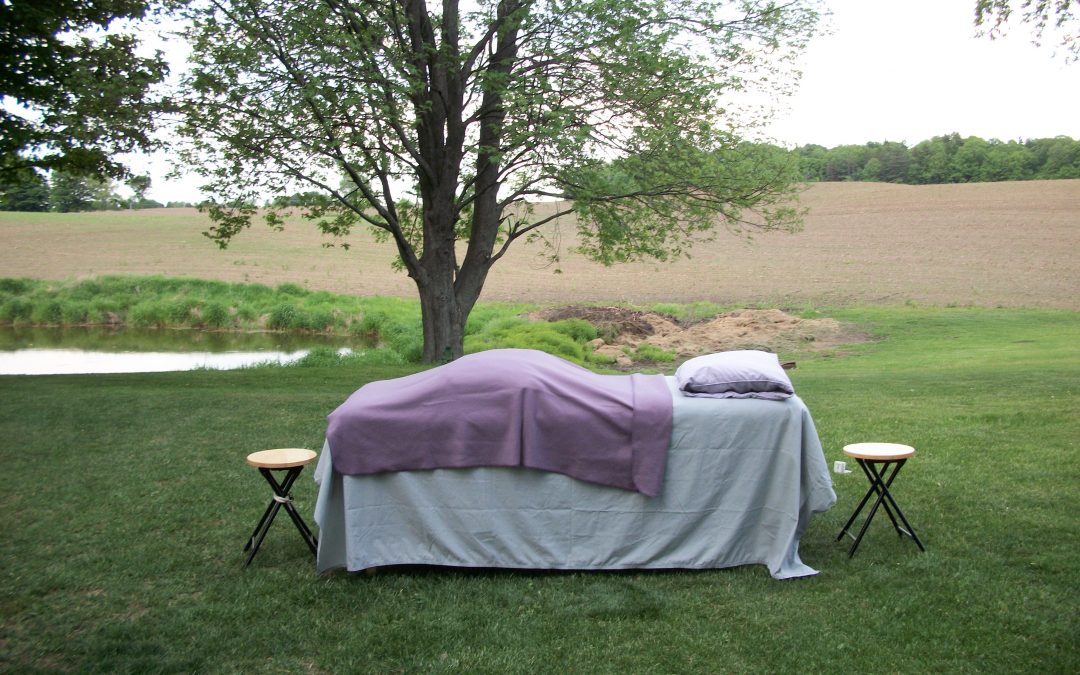by NIKI KLEIN, Shihan
Komyo ReikiDo follows the teachings of Usui Sensei and focuses on healing not only the body, but most importantly, the soul or spirit. Usui Sensei believed that with spiritual improvement, the body would naturally be better capable of healing itself. Hyakuten Sensei shares this belief.
Komyo ReikiDo, the system Hyakuten Inamoto created, presents Reiki as it was understood and commonly practiced in the 1920’s and 1930’s in Japan. This system places emphasis on spiritual unfoldment through the practice of Reiki Ryoho, aiming for ‘Satori’ or enlightenment.
As the practice of Reiki Ryoho was introduced to the west from Japan, many branches or schools developed, some with very complicated techniques that have little to do with the original practice.
Reiki Ryoho is actually a very simple technique. So simple that many have a difficult time understanding that something so simple can be so effective. As a result, additional techniques and modalities have been added on to the practice. While we understand that we are interacting with the energy of the universe, which cannot be defined or confined, and respect the fact that these added practices may be effective, it is important to remember that these are additional techniques, and were not a part of the original practice.
Reiki Ryoho is as easy as quieting your mind, getting yourself out of the way, finding the space between your thoughts, and allowing the Reiki energy to flow of its own accord, without the intention or direction of the practitioner. With daily practice of self-Reiki, meditating on and living the Reiki precepts (Gokai 五戒), as a Reiki student you are actually following a path to enlightenment. As you heal, you become a stronger, clearer, more pure instrument for the Reiki energy. In addition, creativity and intuition increases while the ability to pass this gift of healing on to yourself and others becomes a beautiful outgrowth of your inner spiritual practice. This is the essence of Komyo ReikiDo.
How is it different than Western Reiki?
In Chuden (Second Degree), we discuss this.
A Western mindset is analytical; there is a separation of a whole into parts. For instance, the mind and body are separate, and modern Western medicine is based on this concept.
For now, let me say that Komyo ReikiDo is a ‘Keep-It-Simple’ Reiki system and practice. The practice motto is: ‘Place your hands, Surrender, and Smile.’ This means that the Reiki practitioner does not do any healing, but rather is a facilitator of the recipients’ own innate healing ability.
So, a practitioner is to simply place their hands, surrender to the Reiki energy, and smile, knowing that Reiki is self-directed in accordance with the needs of the recipient, not by direction or intention of the practitioner.
Why take it if I already know Reiki?
I have been researching Reiki for well over 20 years and know that there has been a lot of mythology taught. The more I studied with global reiki researchers, the more I realized that even I, in the past had been sharing information that we know was not accurate.
In the time I have been teaching I have amended my manuals and content numerous times and as more verifiable history is unearthed, I will continue to upgrade manuals, and my teachings.
Having studied with Sensei Inamoto since 2012, I have been delighted to have so many of my questions about Reiki and its origins answered.
Going to source or as close to it brought me to Komyo which is very much based on source information.
The purpose of Komyo ReikiDo:
- To improve the mind and body, and maintain optimal health by means of Reiki Ryoho practice. As Sensei always says: “Mind first, then Body” He means: we heal the mind of the person first, then comes the physical.
- To live a healthy and peaceful daily life. The more peace and balance we cultivate in our lives through Reiki Ryoho practice, the more we directly experience what Mikao Usui (the originator of Usui Reiki Ryoho) called, “the secret method to invite happiness, and the miraculous medicine to cure all diseases.”
- To strive on, through Reiki Ryoho practice, to cultivate and uplift humanity and spirituality so as to attain the ultimate objective of Reiki Ryoho practice: Satori (enlightenment), and Anshin Ritsumei (inner peace).
Komyo = Great light or enlightenment
Reiki = Energy of the Universe
Do = Way or Path
Komyo ReikiDo is a doorway to spiritual awakening, and a path to Satori, or enlightenment.
Does Komyo include self reiki?
Yes, of course, AND we should always practice self-reiki; it works beautifully with meditation. With Komyo, we also learn a lovely self-meditation/self-Reiki.
Is Distance Healing a part of Komyo?
Absolutely.
How many levels does it have?
4 – Shoden, Chuden, Okuden & Shinpiden. Shihan = Teacher
Are there symbols with Komyo ReikiDo?
Yes.
If one has previously studied Reiki, the symbols will be simple, although there are variations to what are known as Mrs Takata’s/Western symbols.
If you have not, the symbols are still simple. Lots of time is given in class for learning the symbols.
Who teaches Komyo in Ontario and/or Canada?
I am the only Shihan (teacher) outside of Toronto where there is another Shihan. New Brunswick has a former Ontarian Shihan and currently 2 in Alberta.
https://www.komyoreikido-international.net/usa–canada.html
Over the years, I had/have the privilege of studying in person, a week at a time, with the Founder of Komyo ReikiDo: Inamoto Hyakuten^ a Japanese Buddhist Monk of the Pure Land Sect. Since Covid and continuing, monthly gatherings have been offered over Zoom as well as regular 2-day refreshers.
Sensei’s lineage is direct from Hayashi Sensei through Mrs Yamaguchi.
Niki is a Registered Teacher = Shihan through the Komyo ReikiDo Association as well as a long-time member of the Canadian Reiki Association.
^ Traditionally, in Japan the family name is spoken prior to the given name.
Thanks in part to https://www.komyoreikido-international.net/

Recent Comments